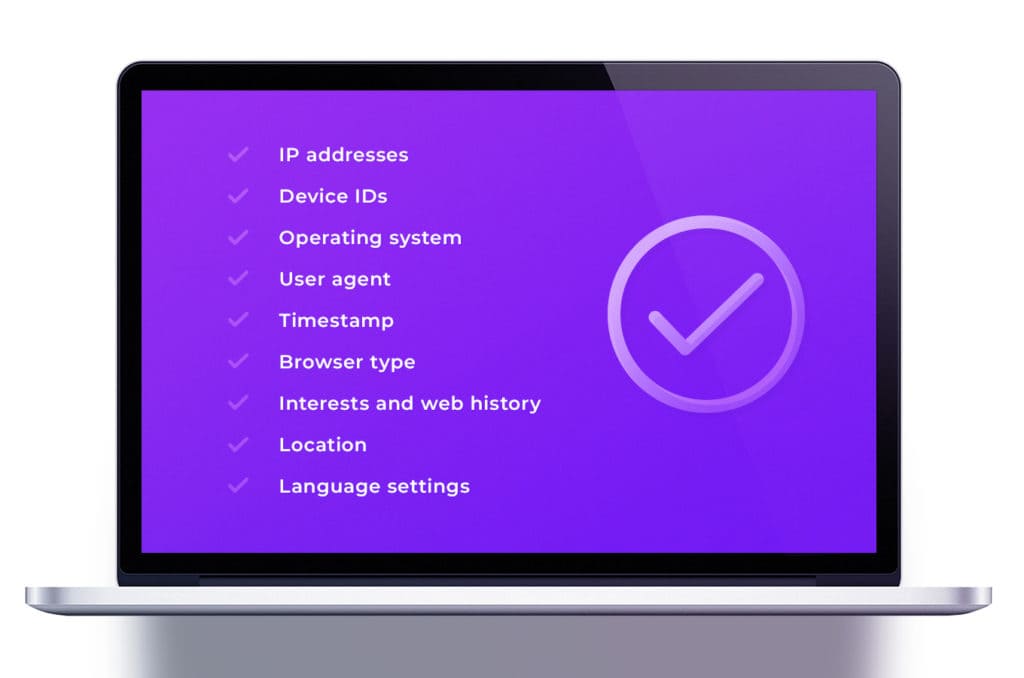If you think that the standard visitor journey starts after seeing an ad on a desktop and ends roughly two minutes later with a conversion done on the same machine, there’s only one thing I can say: “Ok, boomer. Cool kids know that they need to use cross-device attribution”.
The average number of internet-connected devices in US households exceeds three. These devices are usually used in a complimentary manner, not to do specific tasks. This means that in today’s world, people :
- start browsing the web (and potentially make the first connection with your marketing campaign) on the desktop, while sipping morning coffee,
- then continue browsing on their mobile device during their commute
- and finish it on their work laptop.
There are many possible touchpoints in this scenario and, as a marketer, you should focus on recording all of them to get the full picture. This is where cross-device attribution comes in.
This article will give a comprehensive look into what cross-device attribution is, what benefits it brings, and how to implement it into your campaign funnels.
What is Conversion Attribution Anyway?
Conversion attribution is the process of connecting the initial and final touchpoints together, so you know who clicked the ad and then converted. This is performance marketing in it’s essence.
Traditional marketing looked like this: a marketing department was launching a social media campaign for, let’s say, $7,500 that lasted for a week. During that week the whole company noticed a 3% increase in sales. Head of the marketing department concluded that their team’s efforts resulted in this increase. He or she had no idea if that campaign actually worked or the increase was incidental and unrelated to the campaign. They had no idea what elements of their campaign worked for whom, what parts of the audience brought the most profit.

Traditional marketing was, and still is, a mixture of gamble, guesswork, and a lot of creativity in presenting the numbers in PowerPoint to the company’s executives.
Now, performance marketing introduced numbers to the game. It is obsessively focused on measuring the effectiveness of each dollar spent on ads. And the basis of such measurements is conversion attribution.
With the knowledge of who converted and who didn’t, marketers now have the power to optimize their messages towards the most effective parts of the audience. They can increase their ROAS (return on ad spend) and learn from each campaign. They can also prepare diversified messages targeted at different recipients.
All that is possible once marketers are able to attribute a conversion to a specific click on an ad.
Traditional Ways of Measuring Conversion Attribution
The way the industry’s been tackling the issue of conversion attribution relies greatly on cookies.
Yes, those bad cookies that are now presented to us as the root of all evil.
They are designed to store some information about a visitor, with the identifying data included. Cookies are created by the web browser and, provided that the visitor will not change the browser, they will help to record the whole journey.
You’ve noticed the problem. “Provided the visitor will not change browsers”.
Let’s circle back to the way people consume information nowadays.
Cookies are browser specific. So if a visitor picks up a new device, there will no longer be continuity in the data stored in cookies. The initial touchpoint, where a visitor clicks an ad, will be recorded on one device, and the conversion on the other. You will know that some people clicked an ad and some of those people converted, but you lose the way of attributing a given conversion to a specific click on the ad.
Only cross-device attribution can solve that problem.
In the world of mobile apps the problem of tracking user activity is solved on the operating system level. Both Apple and Google assign a unique identifier (IDFA and GAID) that allows advertisers to track visitor’s actions inside mobile apps. Although Apple limits access to the IDFA by default, these identifiers are still a viable option of tracking that, unfortunately, work inside mobile apps only.
The Benefits of Cross-device Attribution
The cross-device approach reflects the way people use the Internet. It acknowledges the fact that visitor journeys are not centered around a single device rather than trying to shrug it off.

This approach provides a holistic picture of marketers and really puts the ‘performance’ in the ‘performance marketing’. With the ability of tracking visitors across multiple devices, you get the following perks:






The methods of Cross-Device Attribution
There are two main ways of tracking visitors across devices:
- Deterministic
- Probabilistic
The first one is simply better, provides more accurate data, and should be your preferred method, while the second one only intelligently guesses which conversion came from which click without actually knowing it. Let’s talk about both of them some more.
Deterministic Cross-Device Attribution
This is the service that is based on the first-party registration data. By having a visitor logged in on one platform across all devices they use, such a platform would get a complete picture of their shopping experience.
You probably know where this is going.
This approach is obviously reserved for the biggest players, such as Google or Facebook. They are some of the few platforms that users are logged in to everywhere.
Advertising on those platforms comes with certain costs.
For starters, you are subject to their rather strict advertising guidelines that rule out whole verticals or approaches.
Secondly, you give all your data to them on a silver platter. They will obviously use it to train their algorithms and know what’s hot right now. And they will use this data to compete with you.
Thirdly, because both Facebook and Google rely on pixel (script) technology to report conversions, they do not allow nor support running offers that you don’t have control over, because you won’t be able to implement their pixel to the offer page. So, for marketers that run third-party offers that come from affiliate networks, this is a problem.
Voluum and third-party offer tracking
The solution to the latter problem is to use affiliate marketing sofware such as Voluum, which can enable conversion tracking for third-party offers with Google, Facebook or Microsoft Advertising (Bing Ads). In short, it works because Voluum records conversions by itself and then passes them to those platforms in a form they can receive them.
Probabilistic Cross-Device Attribution
People that advertise outside the advertising giants are put in a very tough spot. It would seem like tracking conversions across devices is out of their reach.
Luckily, some smart people have put their minds to it and proposed a probabilistic method. This approach tracks all kinds of data for different touchpoints and then estimates which of them could have come from the same person.
Think of this this way: If a person uses a desktop and then moves to a mobile device, it is likely that this person is still on the same network, and therefore, has the same external IP address. Or has the same language settings, browser type and location at least.
There are a lot of characteristics that can help to pin the activity to the concrete user. Obviously, this method will bever be as accurate as the deterministic approach, but it’s the next best thing.
The probabilistic approach uses the following data points:
- IP addresses
- Device IDs
- Operating system
- User agent
- Timestamp
- Browser type
- Interests and web history
- Location
- Language settings

These data points form a digital fingerprint that companies can use to attribute conversions across multiple devices. Think about this way: there are small chances that two separate people share all or most of these characteristics at a similar time.
There are platforms that provide you with the digital fingerprint identifying services and you can connect them to your advertising funnels.
Additional ways of Cross-Device Tracking
Some companies go even further and implement questionable technologies to connect the dots. A chief example would be ultrasound technology. It weaves ultrasounds that are not picked up by human hearing with ads and uses apps with a special SDK to listen to those sounds. Whenever an app registers this sound, an advertiser knows that this person is in the vicinity of an ad.
This of course raises serious privacy concerns and is not used widely. What the use of this tech proves is how important it is to companies to know how to track and target across devices.
Cross-Device Attribution is the Future
The last thing worth remembering is that the cross-device approach shouldn’t be adopted for art’s sake, or because a blog you’ve never heard of told you to do so. This approach simply reflects how the Internet is used nowadays. Your tracking scripts, cookies, SDKs should be where your users are. And you should collect information from all of them.
If you go with one of the big players remember that Voluum can help you a lot with third party offer tracking plus additional features such as offer rotations or traffic distribution AI. With reasonable pricing options, Voluum is a must-have tool for any marketer.




